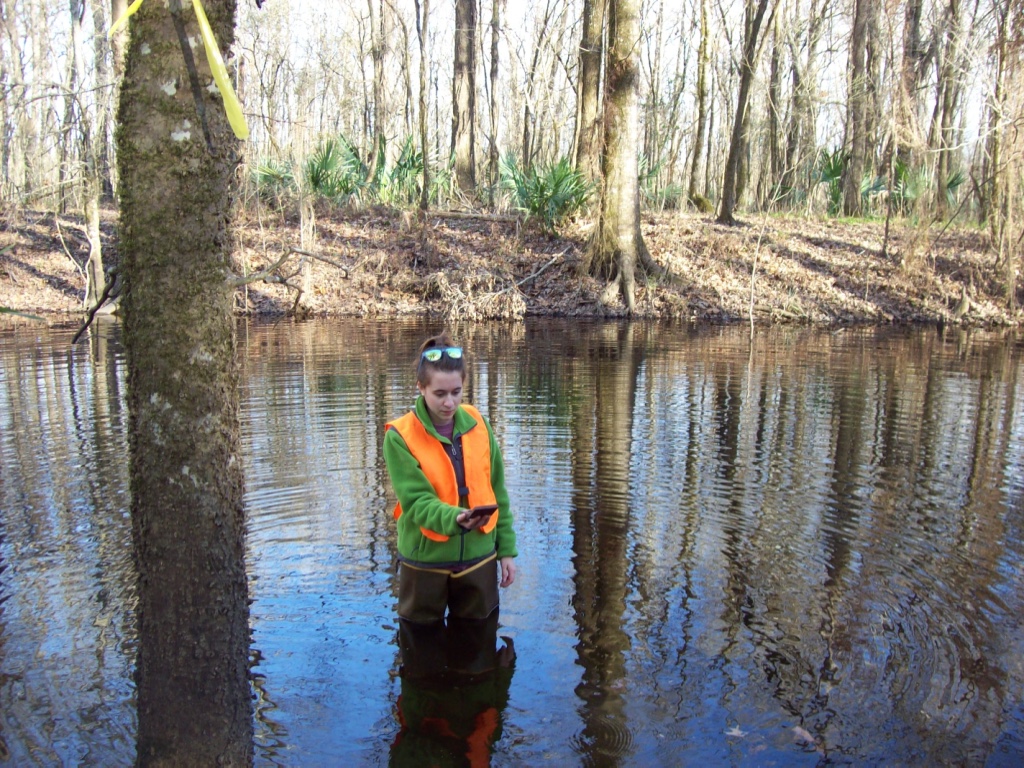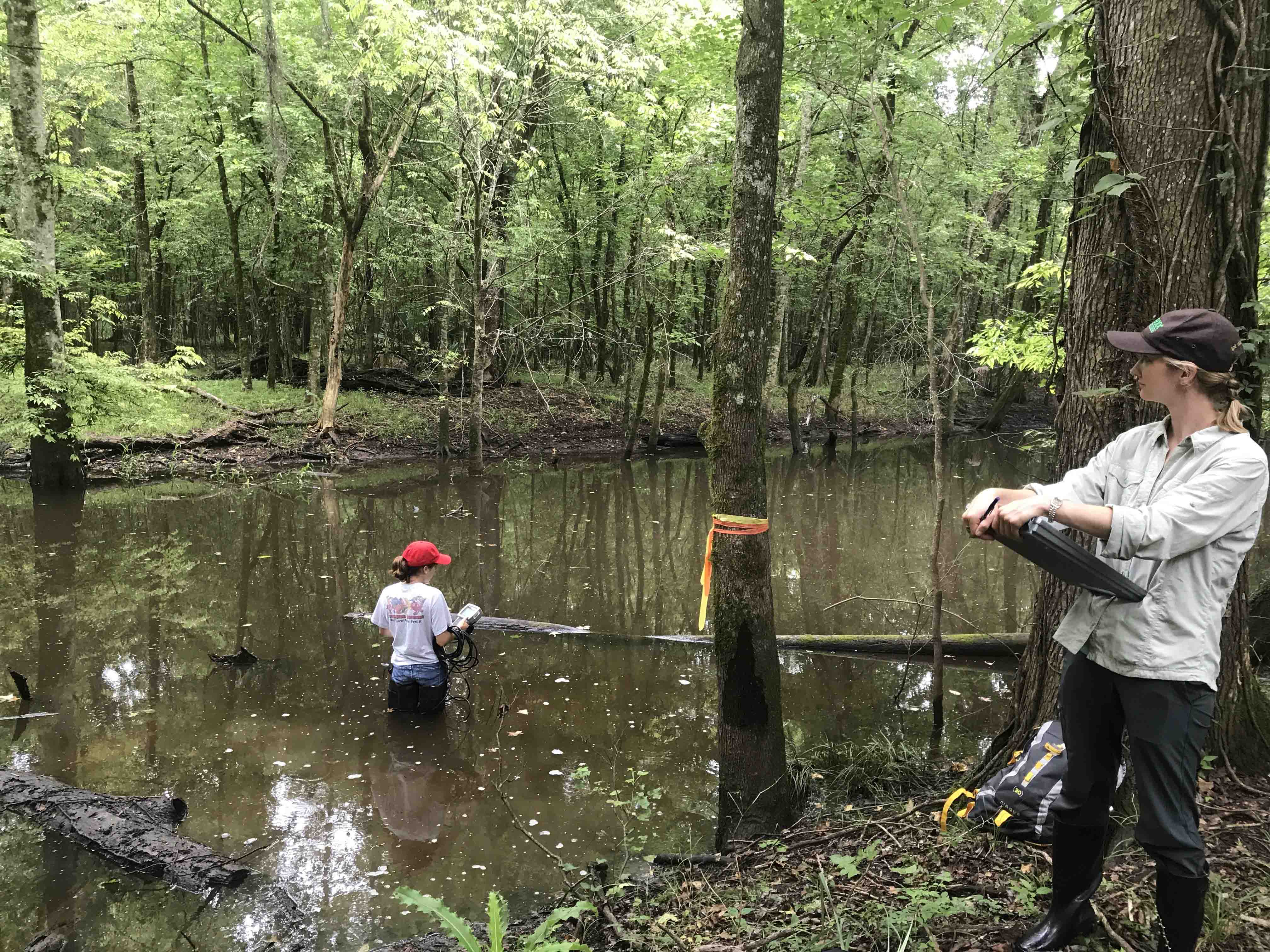Intern researches effects of streamside management zones

Sarah Catherine LeBlanc wades into a stream with tools to measure water quality as part of research she did interning with A. Wilbert’s Sons. Former LSU research associate Laura Keys looks on from the bank. Photo provided by LeBlanc
LeBlanc’s research focused on the effect of streamside management zones — areas near
waterways that are managed to protect the stream from forestry operations — on land
managed by A. Wilbert’s Sons. She was looking at the effect these zones have on the
aquatic ecology in Louisiana bottomland hardwood forests.
“I have always been fascinated with how different ecosystems work and how we as environmental
specialists, researchers and students are able to manage and learn about how certain
systems work,” LeBlanc said.
Dr. William Kelso, professor in the School of Renewable Natural Resources, served
as LeBlanc’s faculty advisor and said the project was a great opportunity to prepare
LeBlanc for scientific research later in her career.
Under Kelso’s guidance, she set out to determine if SMZs are effective in the preservation
of water quality.
“It made me realize I had a lot to learn about the specific parameters that take place
in these ecosystems,” LeBlanc said about the project.
She focused on four sites near Ramah, Louisiana. Two of the sites were SMZs and two
were used as controls. She worked in the side channels of the area until decreased
water levels forced her to move to the main channel.
In four- to five-week intervals, LeBlanc collected her data using instruments that
measured basic water parameters such as pH and dissolved oxygen levels, the light
available to reach the surface of the stream and the canopy density over the stream.
Leblanc concluded that the SMZs do not differ significantly from the controlled sites
and that A. Wilbert’s Sons is doing an effective job of managing their land.

LeBlanc presented her results to managers of A. Wilbert’s Sons and LSU College of
Agriculture faculty members.
Klein Kirby, president and chairman of A. Wilbert’s Sons, was impressed by the depth
and caliber of LeBlanc’s research.
“The purpose of this internship is to support the undergraduate program and show what
students are doing and what they get out of it,” Kirby said.
LeBlanc and Kirby both see potential in continuing the research through future internship
opportunities.
LeBlanc said through the work she learned to embrace her mistakes and learn from them.
“If you make them now, you won’t make them later,” she said.